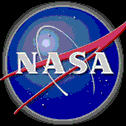www.moonlandings.co.uk
The Apollo Programme
The Apollo Space Programme began before the first American was launched into space. In July 1960, NASA announced that a project to fly Astronauts around the moon would follow the planned Mercury programme, but with President Kennedy's famous speech on 25 May 1961, the focus on the Apollo missions shifted to a lunar landing and came into sharper focus with the concrete goal of achieving this before the decade's end.
The Apollo programme began with a tragedy, when fire swept through a Block One Apollo spacecraft on 27 January 1967 killing Virgil I 'Gus' Grissom, Edward White and Roger Chaffee during a 'plugs out' test on the pad. The subsequent redesign produced a safer and superior spacecraft for the 45 astronauts that flew in them from Apollo 7 in October 1968, to Apollo-Soyuz in July 1975. In all, twelve men, starting with Neil Armstrong and ending with Eugene Cernan, walked on the Moon before the Apollo project was completed. Apollo 18, 19 and 20 were cancelled due to budget limitations. One of these missions had been scheduled to explore the scientifically intriguing crater Aristarchus, where astronomers through the ages had witnessed geological (or, more properly, 'lunalogical') activity through their telescopes and wondered whether or not it might be volcanism. We are still wondering.
In 1969 over a billion people witnessed the 'impossible' coming true as the first men walked on the surface of the Moon. For the next three years, the people of the world watched as one of the great explorations of human history was displayed on their television screens.
Between 1969 and 1972, supported by thousands of scientists and engineers back on Earth, 12 astronauts explored the surface of the Moon. Protected against the airlessness and the killing heat of the lunar environment, they stayed on the Moon for days and some of them travelled for miles across its surface in Lunar Rovers. They made scientific observations and set up instruments to probe the interior of the Moon. They collected hundreds of kilos of lunar rock and soil, thus beginning the first attempt to decipher the origin and geological history of another world from actual samples of its crust.
The initial excitement of new success and discovery has since long passed. TV sets no longer show astronauts moving across the sunlit lunar landscape. But here on Earth, scientists are only now beginning to understand the immense treasure of new knowledge returned by the Apollo astronauts.
The Apollo Programme has left us with a large and priceless legacy of lunar materials and data. We now have Moon rocks collected from eight different places on the Moon. The six Apollo landings returned a collection weighing 382 kilograms and consisting of more than 2000 separate samples. Plus, three automated Soviet spacecraft: Luna16, Luna20 and Luna 24 returned small but important samples totalling about 300 grams.
Instruments placed by the Apollo astronauts over 30 years' ago are still detecting moonquakes and meteorite impacts, measuring the Moon's motions, and recording the heat flowing out from inside the Moon. The Apollo Programme also carried out a major effort of photographing and analyzing the surface of the Earth's satellite. Cameras on the Apollo spacecraft obtained so many accurate photographs that we now have better maps of parts of the Moon than we do for some areas on Earth. Special detectors near the cameras measured the weak X-rays and radioactivity given off by the lunar surface. From these measurements, we have been able to determine the chemical composition of about 25% of the Moon's surface, an area the size of the United States and Mexico combined. By comparing the flight data with analyses of returned Moon rocks, we can draw conclusions about the chemical composition and nature of the entire Moon.
Thus, in less than a decade, science and the Apollo Programme changed our Moon from an unknown and unreachable object into a familiar world.
The basic hardware needed to complete the lunar landing in the Apollo missions included the Saturn 1B and Saturn V Launch Vehicles, the Command-and-Service Module (CSM), the Lunar Module (LM), the LM Environmental Control System (ECS), the Apollo Suit and the Lunar Rover.
The Thirteen Apollo Missions:
